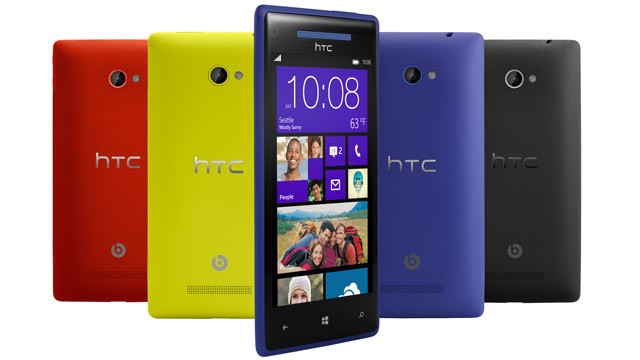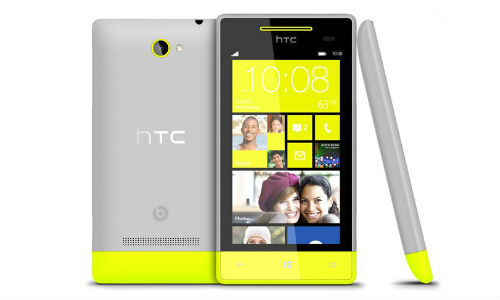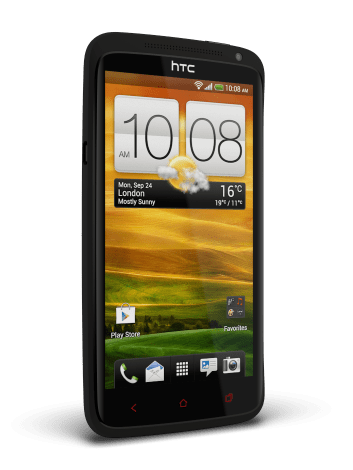While the rest of the tech community in India were busy discussing the pitfalls of Apple pricing the iPhone 5 which it launched in the country last week prohibitively, its Taiwanese archrival HTC silently announced the launch of three new handsets in the country. Of these, two are based on Microsoft’s Windows Phone 8 platfrom while the other is based on Android. The three handsets in question are the Windows Phone powered 8X and 8S and the Android powered upgrade to the HTC One X, christened the One X+. Let us now take a closer look at these handsets.

The 8X
HTC’s flagship Windows Phone 8 powered device, the 8X sure has some meaty specs going in favor of it. It starts with the 4.3 inch “HD” display with a resolution of 1280*720 pixels. The display gets a gorilla Glass coating and is of the super LCD 2 type. While it might not be as large as that of the 4.5 inch one on the lumia 920, the pixel density should be much higher on the 8x thanks to its slightly smaller display size.
The phone comes with 16 GB of internal memory and gets 1 GB of RAM which should make the phone very snappy – especially considering the fact that Windows Phone is traditionally known to be a less processor intensive platform compared to its competition. That reminds me of the processor which happens to be a dual core Qualcomm Snapdragon S4 chip which chugs along at 1.4 Ghz.
At the rear is an 8 megapixel camera complete with autofocus, LED flash and BSI sensor that should ensure better low light captures. The rear camera can also capture videos at full HD resolutuin. There is also a 2.1 megapixel camera at the front which can also surprisingly capture videos in full HD!
On the connectivity front, you might be not happy to learn that there is no sign of LTE support here – albeit the crazily fast HSDPA support does find its way in. Should keep us Indins satisfied for the next few quarters. The standard bunch of connectivity options – bluetooth, Wi-Fi, USB and NFC do find their way in, though.
Powering all this hardware is an 1800 mAH battery that we feel is slightly inadequate – although we’d reserve any comments after we get to review this one soon.
HTC has priced the 8S at Rs. 35,023.

8S
Next up is the mid range Windows Phone powered handset – the 8S. This handset is powered by a Qualcomm S4 processor and is ably supported with 512 MB of RAM. There is 4 GB of internal memory which can be expander further using microSd cards.
The display on this phone is a 4 inch one with a Gorilla Glass coating an WVGA resolution. Like its elder brother the 8X, this one too comfortable skips LTE support. NFC too has been given a miss. Other connectivity options inlcuding bluetooth, Wi-Fi, USB and HSDPA – remain.
there is a 5 megapixel auto fucus camera at the rear with LED flash. the phone also suports video recording in 720p. The battery is rated at 1700 mAH which should keep the device powered for an entire day of normal usage.
The 8S has been priced at Rs. 19,260 in india.
One X+
One of the more important launches for HTC in India was the upgraded version of its flagship – the One X. Christened the One X+, the device is a slightly upgraded version of the erstwhile flagship. It features the same 4.7 inch, 1280*720 pixel display as that of its predecessor and shares the same design. What has however changed is the processor which is now a quad core Tegra 3 AP37 chipset based one wich screams along at 1.7 Ghz. There is 1GB of RAM to complement the processor.

The camera department more or less remains the same with the one X + sporting the same 8 megapixel unit one as seen on its predecessor. As expected, it can also capture videos in full HD. For videocalling purposes, there is a front camera as well which can also capture videos at 720p.
On the connectivity front, there is full support for Wi-Fi, Bluetooth, USB and HSDPA. LTE has been given a royal miss – which won’t be an issue for anyone here in India.
HTC has priced the 64 GB version in India at Rs.40,190 which is on the expensive side – but is still cheaper than the recently launched iPhone 5.
